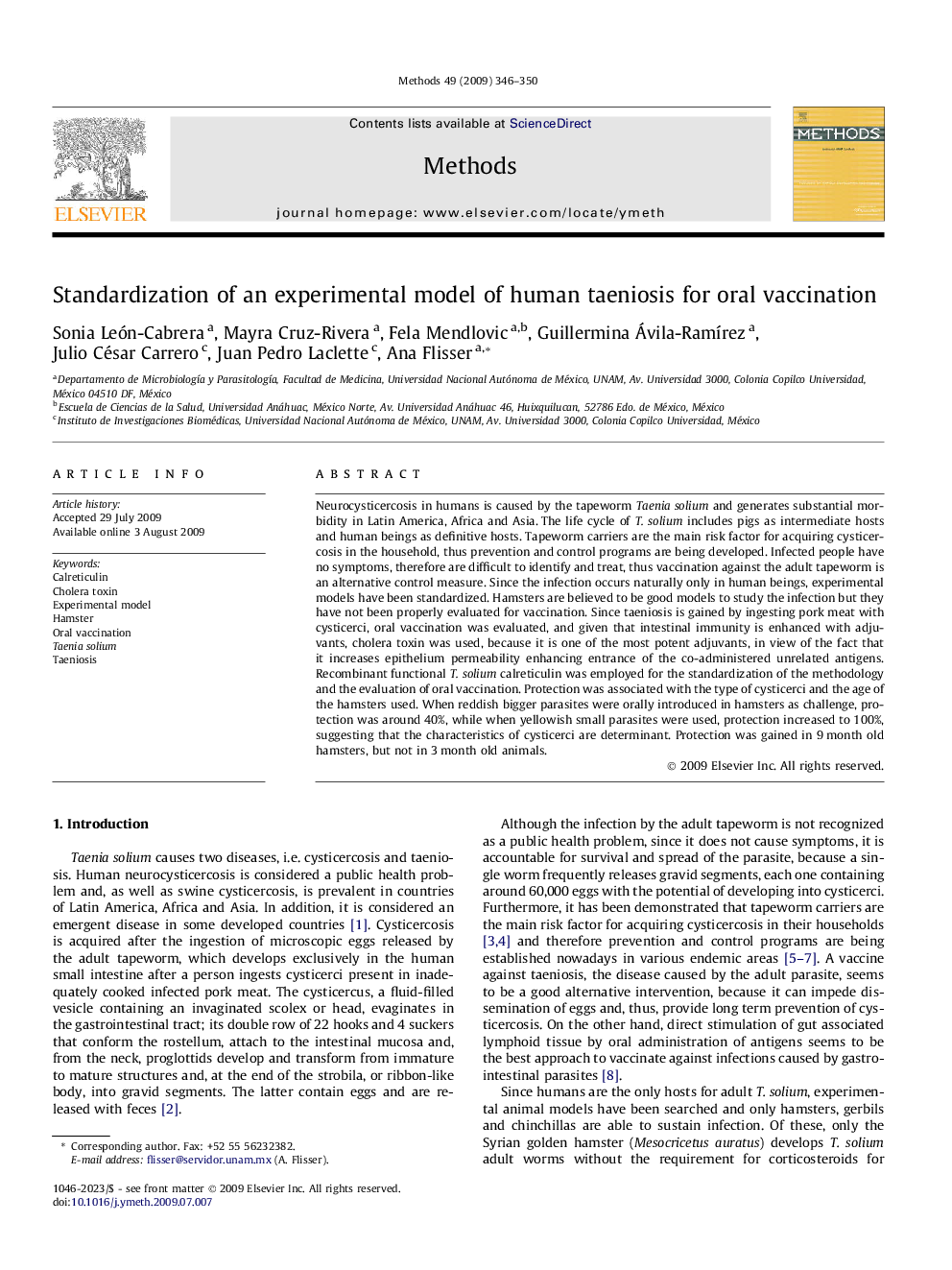| کد مقاله | کد نشریه | سال انتشار | مقاله انگلیسی | نسخه تمام متن |
|---|---|---|---|---|
| 1993880 | 1064715 | 2009 | 5 صفحه PDF | دانلود رایگان |

Neurocysticercosis in humans is caused by the tapeworm Taenia solium and generates substantial morbidity in Latin America, Africa and Asia. The life cycle of T. solium includes pigs as intermediate hosts and human beings as definitive hosts. Tapeworm carriers are the main risk factor for acquiring cysticercosis in the household, thus prevention and control programs are being developed. Infected people have no symptoms, therefore are difficult to identify and treat, thus vaccination against the adult tapeworm is an alternative control measure. Since the infection occurs naturally only in human beings, experimental models have been standardized. Hamsters are believed to be good models to study the infection but they have not been properly evaluated for vaccination. Since taeniosis is gained by ingesting pork meat with cysticerci, oral vaccination was evaluated, and given that intestinal immunity is enhanced with adjuvants, cholera toxin was used, because it is one of the most potent adjuvants, in view of the fact that it increases epithelium permeability enhancing entrance of the co-administered unrelated antigens. Recombinant functional T. solium calreticulin was employed for the standardization of the methodology and the evaluation of oral vaccination. Protection was associated with the type of cysticerci and the age of the hamsters used. When reddish bigger parasites were orally introduced in hamsters as challenge, protection was around 40%, while when yellowish small parasites were used, protection increased to 100%, suggesting that the characteristics of cysticerci are determinant. Protection was gained in 9 month old hamsters, but not in 3 month old animals.
Journal: Methods - Volume 49, Issue 4, December 2009, Pages 346–350